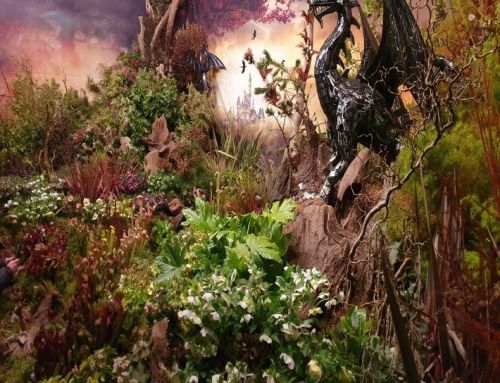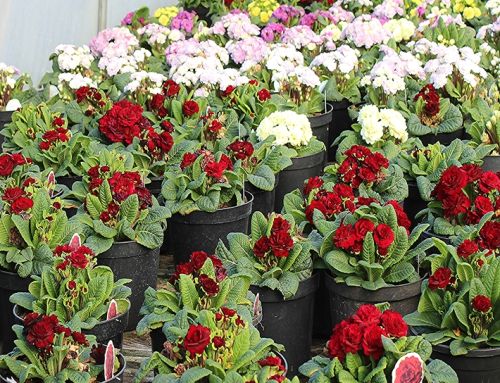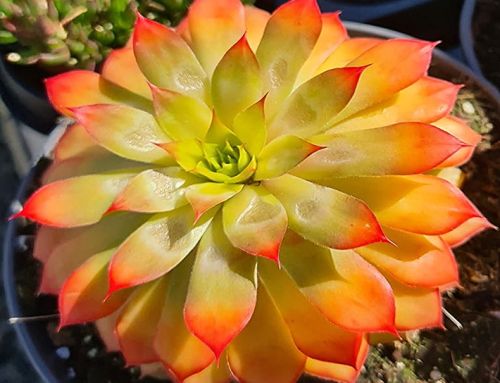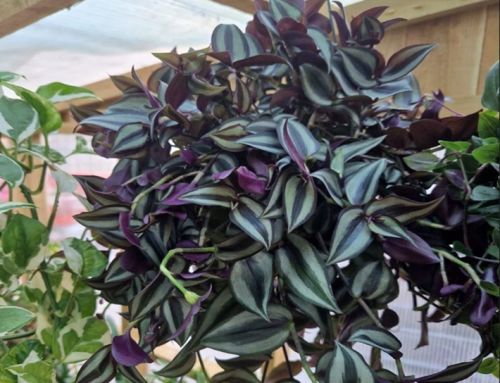The Allure of Ferns
Perfect at home in a shady or woodland garden. These lush, ancient, primitive, magnificent, non-flowering plants reproduce via spores. Ferns are low maintenance and will grow in a wide range of soil conditions, and can grow all year round, bringing some welcome colour in cooler months. The perfect plant to add texture, and movement to your garden. They come in such a huge variation in appearance and size, yet there are few perennials that have such a distinctive and recognisable form as ferns. The fronds of the ferns have a unique shape and texture creating a striking focal point in the garden where they contrast well with other companion plants such as Hostas, Heucheras and Aquilegias. Although they are a very distinctive group of plants, it is somewhat more difficult to distinguish one from another. Some ferns make tight compact specimens, which contrasts beautifully with the spreading foliage of Bergenias and Hostas, while others spread into attractive colonies around mature shrubs.
Evergreen or Deciduous?
There is not a yes or no answer to this often-asked question! Some ferns are evergreen; they retain their green fronds all year round; whereas others are deciduous, and die back in the winter months and producing new fronds in spring. Then there are the semi-evergreen ones that will shed their leaves in the colder months if the weather is very cold.
Planting
As with all plants they do well in their natural habitat, so ideally plant in an area that mirrors how they would normally grow, a woodland or shady garden is perfect. It is worth doing a little bit of research first to get the right ferns to match your planting area. Asplenium scolopendrium for example are quite partial to filling gaps in walls and paving and are happy in deep dry shade. Whilst Osmunda regalis will thrive in wet conditions.
Caring
As stated above Ferns are very easy to care for and low maintenance. They will need to be well watered in the first year of planting, but after that, they should get all they need from rainfall. Apart from during long dry periods when they will need some watering. It is best to water at the base to avoid any rotting. If you keep your Ferns in containers these will need regular watering, as they will dry out quicker. Any dead or brown fronds can be cut off at the base with secateurs in the spring, be careful not to damage any new fronds appearing at the base.
Propagating
 The easiest method of propagation is division in springtime, the divisions can then be potted and kept in a cold frame until roots have developed. They can also be propagated by spores. Sporangia, which are small capsules of spores that are produced on the underside of the fronds, when ripe will shed their spores to be dispersed by the wind. If the spores land in a suitable position they will form a heart shaped structure called a prothallus, which goes on to produce a fern. This process can take anything from 6 weeks to 3 months. To harvest the spores you will need to periodically check the undersides of the fronds, once the sporangia turn brown and before they burst, cut off the frond and wrap it in smooth white paper and leave for a day or two. Carefully unwrap the paper, and you will see a fine brown dust in the paper, this brown dust is millions of minute spores. These spores can then be sown on to the top of damp compost, covered with a plastic bag or cloche and left to germinate. They will need regular watering but rather than watering from the top it is best to stand in a saucer of water.
The easiest method of propagation is division in springtime, the divisions can then be potted and kept in a cold frame until roots have developed. They can also be propagated by spores. Sporangia, which are small capsules of spores that are produced on the underside of the fronds, when ripe will shed their spores to be dispersed by the wind. If the spores land in a suitable position they will form a heart shaped structure called a prothallus, which goes on to produce a fern. This process can take anything from 6 weeks to 3 months. To harvest the spores you will need to periodically check the undersides of the fronds, once the sporangia turn brown and before they burst, cut off the frond and wrap it in smooth white paper and leave for a day or two. Carefully unwrap the paper, and you will see a fine brown dust in the paper, this brown dust is millions of minute spores. These spores can then be sown on to the top of damp compost, covered with a plastic bag or cloche and left to germinate. They will need regular watering but rather than watering from the top it is best to stand in a saucer of water.
They can also be propagated from leaf cuttings, this is a little more tricky, as not all ferns can be propagated in this way. Varieties such as Dryopteris wallichiana, Polystichum setiferum and Asplenium x lucrosum will make miniature replicas on the fronds of the parent plant, called bulbils. These bulbils can then be rooted, by bending the frond and pegging it down on a tray of moisture retentive compost, or by removing the frond and pegging that down, they can then be placed in a moist atmosphere in a cool, shady spot in a greenhouse or cold frame. Over time, the frond will wither and small ferns develop. Overwinter the rooted ferns and pot on in spring when signs of growth appear.



 from a central point really add a touch of something to a shady corner of the garden. Prefers a semi shaded or totally shaded site where it will soon colonise a large area.
from a central point really add a touch of something to a shady corner of the garden. Prefers a semi shaded or totally shaded site where it will soon colonise a large area.




